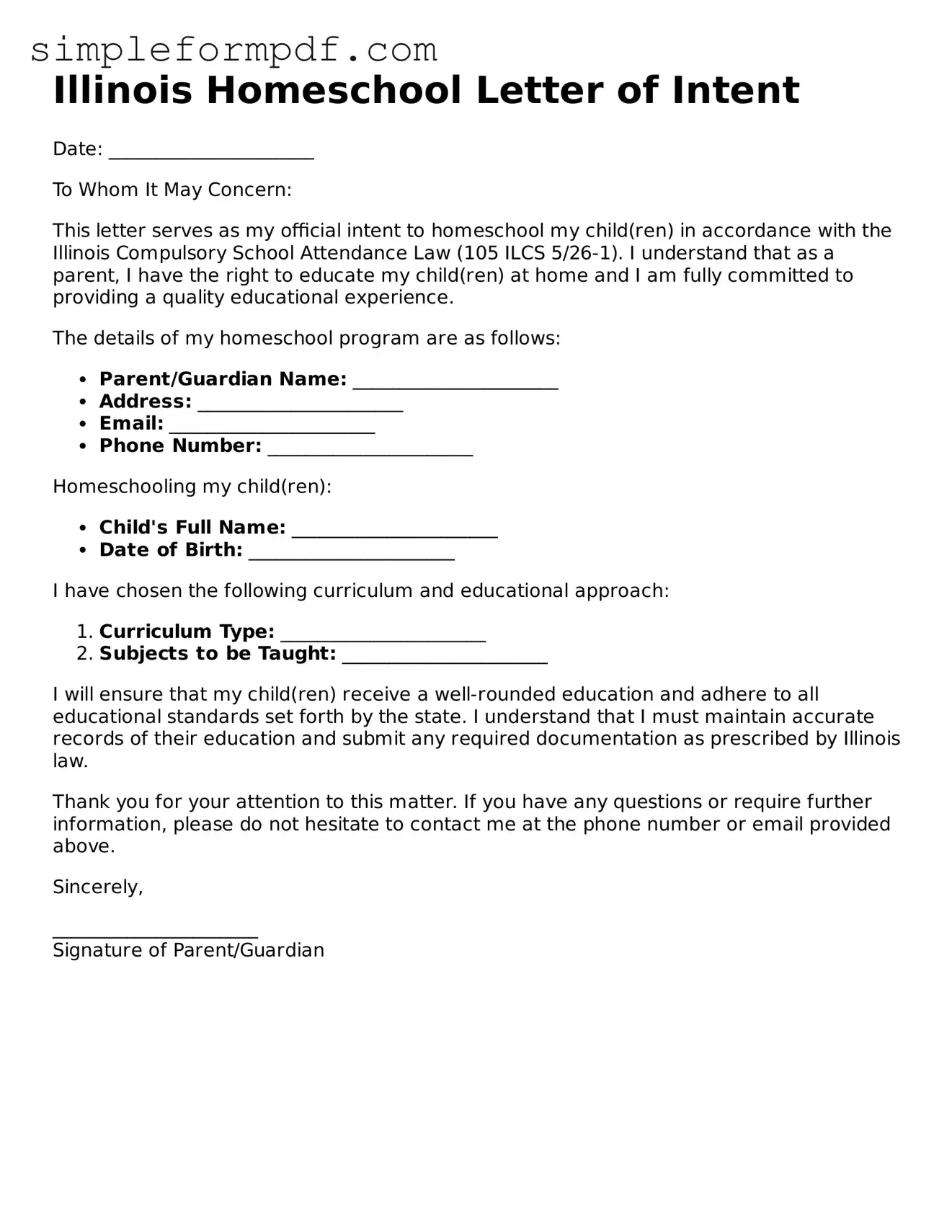Illinois Homeschool Letter of Intent
Date: ______________________
To Whom It May Concern:
This letter serves as my official intent to homeschool my child(ren) in accordance with the Illinois Compulsory School Attendance Law (105 ILCS 5/26-1). I understand that as a parent, I have the right to educate my child(ren) at home and I am fully committed to providing a quality educational experience.
The details of my homeschool program are as follows:
- Parent/Guardian Name: ______________________
- Address: ______________________
- Email: ______________________
- Phone Number: ______________________
Homeschooling my child(ren):
- Child's Full Name: ______________________
- Date of Birth: ______________________
I have chosen the following curriculum and educational approach:
- Curriculum Type: ______________________
- Subjects to be Taught: ______________________
I will ensure that my child(ren) receive a well-rounded education and adhere to all educational standards set forth by the state. I understand that I must maintain accurate records of their education and submit any required documentation as prescribed by Illinois law.
Thank you for your attention to this matter. If you have any questions or require further information, please do not hesitate to contact me at the phone number or email provided above.
Sincerely,
______________________
Signature of Parent/Guardian
